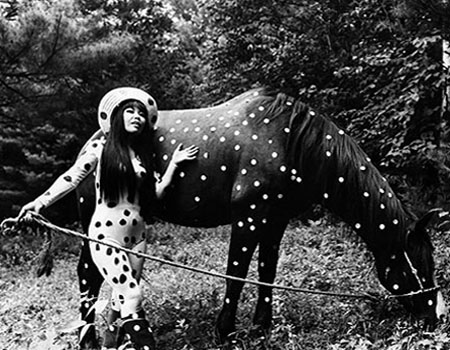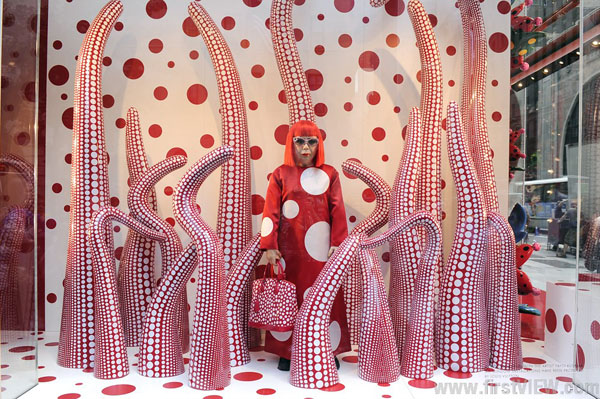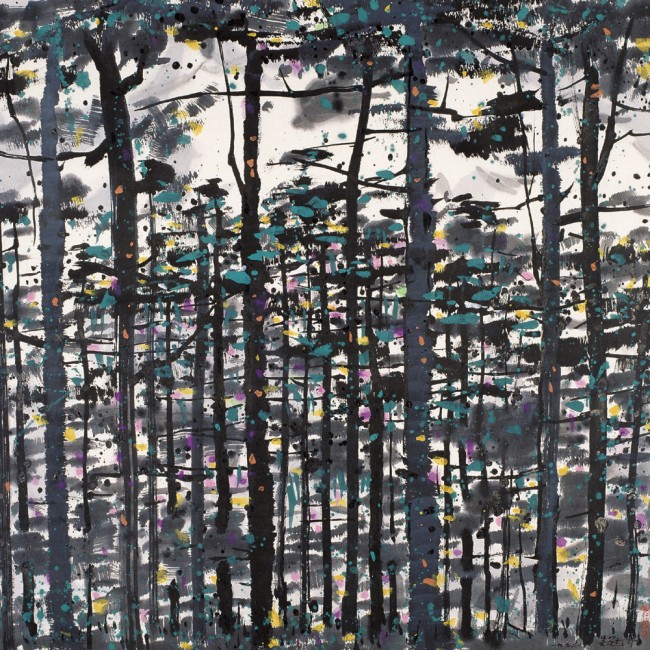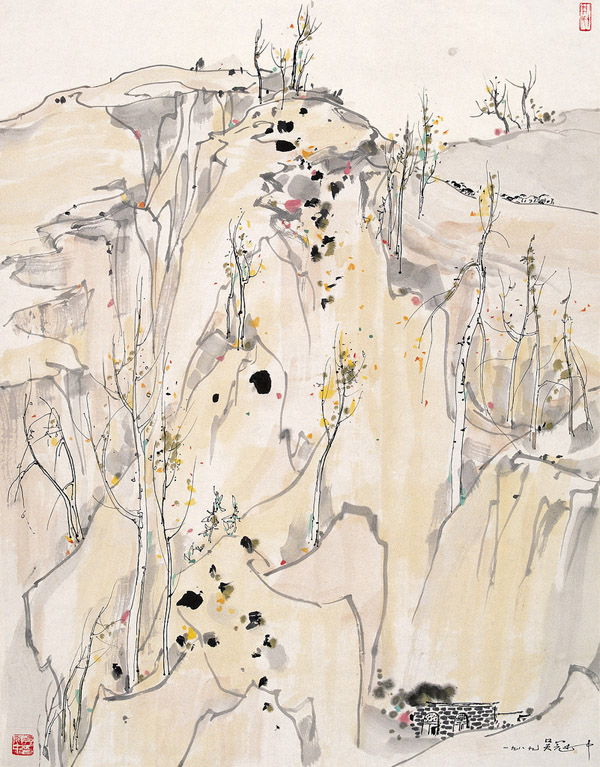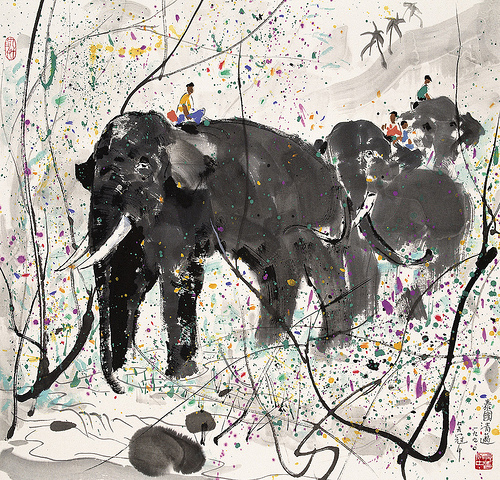Dots Obsession – Infinity Mirrored Room by Yayoi Kusama via Artnet
I saw two artists Friday that held a kinship. First was Yayoi Kusama at the Whitney Museum. The lady of the dots. She was trained in Japanese traditional painting techniques, came to New York in the 1950s and became a fixture in the avant-garde. Even then she was experimenting with dots. In the 1970s she returned to Japan and ultimately developed psychiatric problems, so she rather pragmatically willingly entered a hospital where she’s lived ever since. And continued to be fertile in her artmaking.
Horse Play in Woodstock, a happening, 1967, by Yayoi Kasuma via Frieze
Yayoi Kusama for Louis Vuitton, 2012 via firstVIEW
I was impressed at the Whitney show with Kusama’s striking experimentalism, her wild imagination, her will to create. Above you see her posing in a window display among the soft sculptures she pioneered years ago. Claes Oldenburg is among those she influenced.
One thing that strikes me with Yayoi Kusama’s imagery is the seemingly obsessive-compulsive rigor with which she repeats her dots in increasing/decreasing scale. It’s very reminiscent of old netsuke carvers’ skills in repeating and modulating a repeat pattern. Always a jaw-dropper for me, the patient precision that stays focused til it’s done.
Japanese netsuke via BuddhaMuseum
Yellow Trees by Yayoi Kusama via delightfullycatawampus
My eyes tried to follow a few of the snaky forms in Yellow Trees but they kept getting lost. I fantasize that the artist’s intense focus allowed her to keep the individual strands in mind as she worked.
The artwork is rife with sexual improvisations, some overtly stated and others simply presented in plain sight.
Pumpkins by Yayoi Kusama via artnet
Fireflies on the Water by Yayoi Kusama via The Whitney
Wikipedia has this (unattributed) quote by Kusama.
- One day I was looking at the red flower patterns of the tablecloth on a table, and when I looked up I saw the same pattern covering the ceiling, the windows and the walls, and finally all over the room, my body and the universe. I felt as if I had begun to self-obliterate, to revolve in the infinity of endless time and the absoluteness of space, and be reduced to nothingness. As I realized it was actually happening and not just in my imagination, I was frightened. I knew I had to run away lest I should be deprived of my life by the spell of the red flowers. I ran desperately up the stairs. The steps below me began to fall apart and I fell down the stairs straining my ankle.
________________________________________________________________
Pines by Wu Guanzhong via seeeverythingsaysomething
If Kusama uses dots, the Chinese painting master Wu Guanzhong uses splots. I hope this is a sufficiently respectful way to point out that unlike Kusama’s scrupulous circles, Guanzhong animates his canvases with wildly free variants of this basic shape. Big splots, teeny splots, wielded with wonderful abandon and abundant control.
Guanzhong died in 2010, aged 90, yet I have trouble writing about him in the past tense. His canvases cavort with life and a love of subject matter. You feel he’s got a way to reveal its suchness outside any tradition of realism.
pines by Wu Guanzhong via chinaonlinemuseum
Lion Woods by Wu Guanzhong via asiasociety
Guanzhong also employed a dramatic level of contrast between his larger shapes and the smallest dot clusters that embellish his surfaces. There is little tradition in Western art for a level of zoom this extensive. For a cultural comparison imagine the painting below being a nativity scene by a Renaissance master — the manger would be the stone building at bottom right. Mother, child, Joseph, magi, shepherds, livestock all dwarfed by a larger reality.
by Wu Guanzhong via China Online Museum
And Guanzhong sometimes painted animals. I love many of them and include a couple here.
elephants by Wu Guanzhong via China Online Museum
tigers by Wu Guanzhong via China Online Museum
________________________________________________
Look further:
- Information | Yayoi Kusama
- Celia Bow: Forever Infinity Nets
- Whitney Museum of American Art: Yayoi Kusama
Wu Guanzhong
- Wu Guanzhong Paintings | Chinese Art Gallery | China Online Museum a generous collection of this artist’s wotrk
- Wu Guanzhong – Wikipedia, the free encyclopedia the artist’s partly hellacious life
- Asia Society
- Revolutionary Ink: The Paintings of Wu Guanzhong | Asia Society



